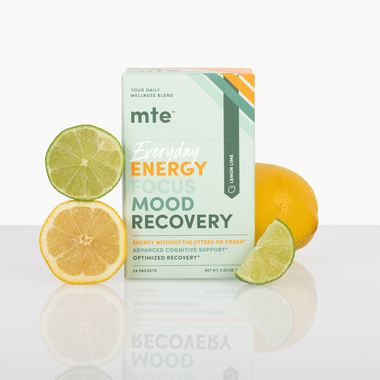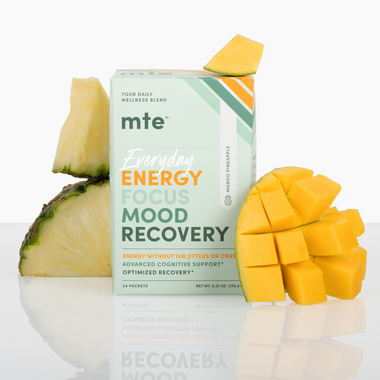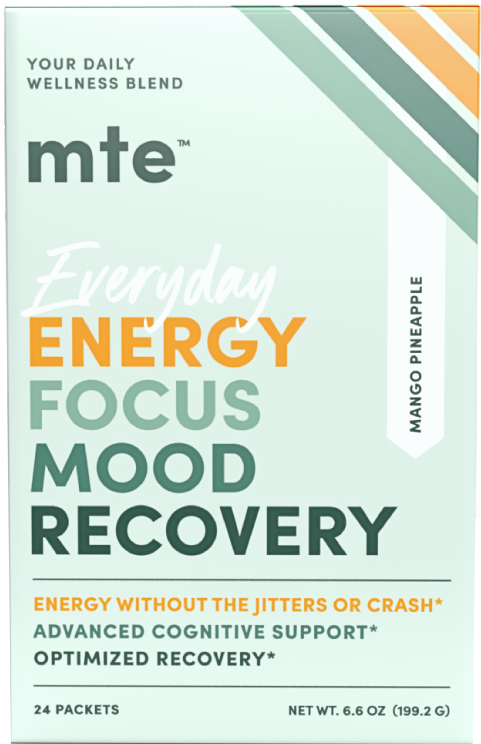
Anxiety is a Reality, But Are Rx’s the Only Answer?
The rates of anxiety in our go-go-go, do-do-do, figure-it-out world have skyrocketed in the last 40 years. Anyone surprised? No. And as the rates have grown and the healthcare system has gotten clogged with a number of additional issues as well, we’ve turned to expedient answers.
Many people who deal with daily feelings of beings overwhelmed aren’t suffering from a chronic disorder, per se, but the constant overstimulation and overexpectation of life. They’re looking for an easy, quick way to handle crisis moments that allows them to get back to their day ASAP. Enter: medications like Xanax.
Meant mostly for as-needed use, dry-swallowing an emergency pill now and then is something we don’t even think about when it comes to any long-term effects. But if you’ve watched the second installment of Take Your Pills: Xanax on Netflix, you’ve already got a primer for this article. Yes – it does matter. In fact, emerging awareness is spurring further research into what dangers lurk inside those harmless looking bottles.
A Brief History of Xanax Usage in the US
The first patent for Xanax was awarded in the ‘70s as a crisis med for panic disorder. Panic disorder is a debilitating condition where, when triggered by a perceived adverse stimulus, a person quickly delves into a flight or freeze response. These are panic attacks. Panic disorder is diagnosed when these attacks happen often.
Panic attacks are accompanied by symptoms that compound the severity of the experience, like seeing spots, difficulty breathing/hyperventilating, tachycardia, and other bodily responses that many people describe as feeling like dying. This is accompanied by a spiral of catastrophic thinking. The dysfunction is that the perceived dangerous stimulus isn’t dangerous, and that these episodes disrupt a person’s ability to function in daily life.
Anxiety attacks are similar but much less severe and much more common, which is a significant factor as to how this medication became America’s favorite way to prevent or mitigate these stress responses in a near-immediate way. We all know how Americans love an instant gratification situation.
Is the widespread use of Xanax a symptom of widespread anxiety? Yes. Is widespread anxiety a symptom of how our society is constructed? Also yes. Have we really solved anything with pharmaceuticals? Not really; we’ve just found a piecemeal way around it.
(If you’re into the idea of a deep-dive into how Xanax became our go-to script for chilling out, VICE has a great article delving into its complicated history. )
What We’re Working With When Anxiety Hits
Obviously, these scripts are helping people – there were 14 million written in 2021 for Xanax alone. And it makes sense, because it immediately interrupts what’s going on when your brain has an intense negative reaction to stress. So, what exactly is going on when that episode of complete overstimulation hits? A few things:
- Your amygdala (read: lizard brain) activates and send “DANGER” signals out to the hypothalamus (read: also lizard brain). These are the innermost primordial structures that govern decision-making purely from a survival point of view. It’s about reactivity.
- Lizard brain relays these “DANGER” signals to your hippocampus, which is a major actor in human stress response. This activates the HPA axis to signal to the rest of your central nervous system in order to activate the sympathetic nervous system, which is the nervous system that engages fight-flight-freeze responses.
- Several structures in the brain and body produce and distribute various neurochemicals that create the fight-flight-freeze response:
- Cortisol: The ubiquitous stress hormone (and the reason chronic stress messes up our mind and body), cortisol increases blood glucose and energy production. It also suppresses maintenance processes like digestion and immune function, all in order to gather everything the body has for that imminent fight-flight-freeze reaction.
- Adrenaline and Noradrenaline: The main hormones associated with extreme stress responses, these increase heart rate and blood pressure, as well as speed processing in the brain.
- Epinephrine: Increases energy production and blood flow, and redirects it all to the muscles.
- Norepinephrine: This hormone is produced when the body metabolizes dopamine. It boosts attention, alertness and learning. The issue with anxiety and chronic stress, among a host of other things, is that it messes with this system, making it more difficult to remain calm and content both in the moment and, eventually, long-term.
While all these things are happening, they’re also shutting out neurochemicals important for calming down, including GABA. When GABA is suppressed, it’s really hard to turn off those biological stress responses and the symptoms associated with them, like panic, tachycardia, shortness of breath, perception of losing control, etc. GABA dysfunction is associated with a host of psychological disorders. So, you know, it’s kind of important.
The useful thing about medicinal products for stress management is they interfere in this biological stress response for you, creating analgesic, amnesic and anxiolytic effects, without you having to gather yourself in a moment where you particularly feel like you can’t. But there’s another side to that coin – what are you messing with for that magical feeling of instant relief?
Popular Pills Come with Risks for Abuse & Addiction
Unfortunately, the risk for dependence and an eventual substance use disorder with as-needed anxiety meds is pretty serious, and it doesn’t take very long to start that slow slide into addiction. Dependence and addiction are largely biological mechanisms, but what complicates these risks, in medications used for relief, is that mental dependence is sometimes nearly as intense as physical dependence.
Think about it: psychologically, if every time you are confronted with a high-stress situation you reach for a pill, you become habituated to that series of actions, Pavlov-style. Plus, you aren’t teaching yourself any coping mechanisms, so you’re never prompted to face those situations or learn sustainable ways to cope. In your mind, you’re reliant on the memory of the relief from that last hit.
Meanwhile, physically, you’re teaching your body it doesn’t need to know how to regulate GABA production and associated activity to calm itself down, because every time it needs GABA, it gets it from an outside source.
At the same time, those mega-doses of GABA eventually cause your central nervous system to become less reactive to GABA’s inhibitory function. And over time, GABA deficiencies can have devastating effects on mental health.
Think about it: you struggle with high reactivity to stress. You use a substance that curbs the effects of that reactivity while it also drains your body of the scant resources it had to curb those effects in the first place. You stop using that substance and you'll find it's eaten away your innate abilities to calm yourself down and step forward steady.
For instance, Xanax’s withdrawal symptoms can prove as dangerous as alcohol withdrawal when it comes to risky substances. It’s the withdrawal, specifically, that’s considered both unique and more severe than coming off of other as-needed stress meds:
- Hyper-alertness
- Hypertensive crisis (can lead to heart attack)
- Sleeplessness and nightmares
- Irritability
- Panic attack recurrence with new physical symptoms
- Seizures
- Extreme mood difficulties
There’s also this weird thing only Xanax seems to do, where it causes a pseudo-pheochromocytoma. This is sort of a fake hypertensive crisis. A hypertensive crisis is defined by a sudden and severe rise in blood pressure accompanied by sinus tachycardia (irregular and increased heart rate).
It’s strange, though, because it’s not accompanied by the spikes in key neurotransmitters that indicate true hypertensive crises. What’s scary is that these pseudo heart attacks are often so severe they require ICU admission. Worse, there have been no observed effective treatments for this reaction except the reintroduction of the medication that caused them in the first place.
Oh yeah, withdrawal from this specific script has been known to cause homicidal ideation in people being treated for PTSD. So there’s that.
Are There Natural Alternatives to Medications for Stress?
We note and acknowledge that people need different things to manage their mental health, and everyone should find a treatment plan that works best for them. However, knowledge is power, especially when it comes to managing your day-to-day experience of life.
There are plenty of alternatives to medications intended to reduce distress and reactivity, both things you can consume and habits you can form (to be discussed shortly). There’s a lot to be said for looking for other, natural ways to cut down your reliance on pharmaceuticals by incorporating safer, less invasive methods for increasing your stress resilience. Since, you know, just exiting society and living a serene life in the woods isn’t an option for 99% of us.
For instance, plant power is a whole movement in the holistic health industry – it’s kind of our whole thing, too. MTE was formulated with 13 powerful adaptogens, nootropics and superfoods that, when taken daily, can help promote a quality of life you might not have thought a simple greens powder supplement could. And that includes supporting healthy stress responses.
Key players like Affron®, ashwagandha, GABA, holy basil, l-theanine, and eleuthero can promote a quiet, present calm without disrupting cognitive performance or posing potentially life-threatening risks that come with medications.
Managing Stressful Moments with Self-Efficacy
Talk therapy is a great way to unpack some of the constructs you may have formed that perpetuate these adverse stress responses, as well as to gather professional advice on steps to take to change those reactions. And there are also things you can try some things yourself.
Some simple cognitive-behavioural (CB or CBT) habits can help write new neural pathways that help you form a sustainable, long-term way to combat high-stress reactions. CB techniques are one of the most effective alternatives to total reliance on Rxs, especially when it comes to stress responses:
- Behavioral Experiments: For when you’re experiencing catastrophic thinking. Take a moment and write all your thoughts down, no matter how bad. Step back and analyze them, fact-checking each one.
- Journaling: Helps you organize and confront your thought patterns, allowing you the chance to analyze them and form new strategies for responding to stress.
- Relaxation Techniques: Meditation and deep breathing exercises can physically calm your body’s stress response, allowing more time and energy to be focused on controlling your mental stress response.
- Thought Challenging: By stepping back in the moment, “looking” at your reactive thoughts, and responding with facts about the situation, you can form a built-in mechanism of thought-talking yourself down.
These strategies are additive over time, as consistency creates new neural connections and tendencies. You’re teaching your mind and body to adapt so it can cope with less help, or – best case scenario – no help at all. Consult a mental health practitioner to find strategies that work for you.
Nootropics Can Help Support Calm Moods & Stress Resilience
And as you’re on your journey to a more natural, sustainable way to manage stress and anxiety, the adaptogens and nootropics in MTE can support and promote your body’s ability to form these new habits and connections.
- Affron®: This nootropic is a premium saffron extract with clinical evidence for its ability to support mood and stress management.
- Ashwagandha: This adaptogen is thought to help the brain's stress-response system to cope with stress more productively by regulating its activity.
- GABA: GABA is the absolute GOAT of chilling out - that all-important, calm-your-brain-down, amino acid-turned-neurotransmitter.
Holy Basil: Clinical evidence indicates holy basil supports stress management as well as some common medications. - L-Theanine: Studies have observed l-theanine increase alpha brainwaves, which are the brainwaves associated with non-drowsy relaxation.
- Siberian Ginseng: This nootropic supports stress and mood management by acting on the the brain's stress response system and modulating feel-good neurochemicals.
These are just 6 of the 13 carefully-curated ingredients in our daily vitality drink – a curated formula of powerful bioactive greens that support increased stress resilience, mood support, balanced energy, and much more in a simple energy greens powder. You can find more in-depth information, references and resources about these potent ingredients on our Stress page and our Wellness Blog.
Curious if there’s another way for you to deal with crisis moments without relying on synthetic chemicals with mysterious consequences? Learn more about MTE’s formulation and how we’re changing the face of energy drinks. Because a productive day is about more than caffeine– it requires feel-good ingredients that promote your mind and body to perform at your best: with calm, positive focus.






